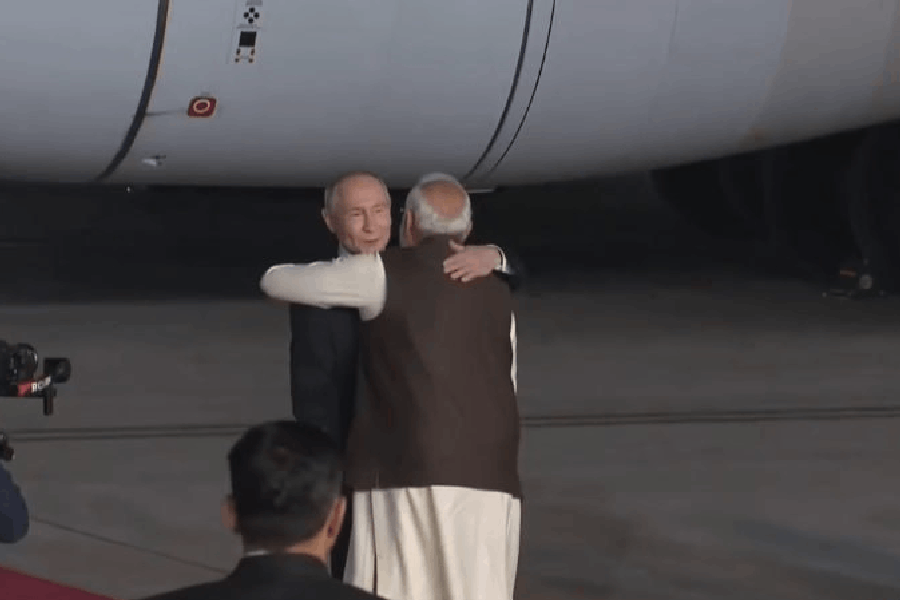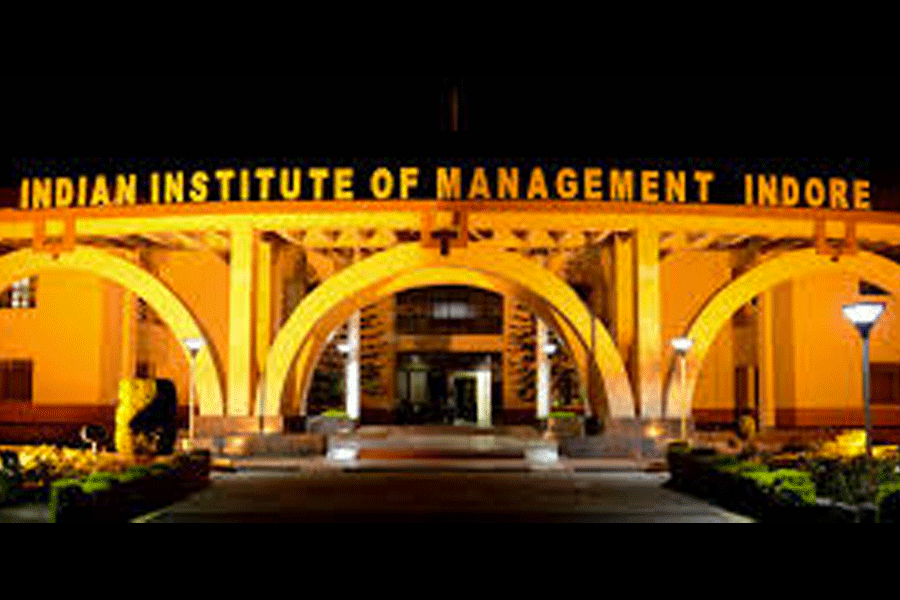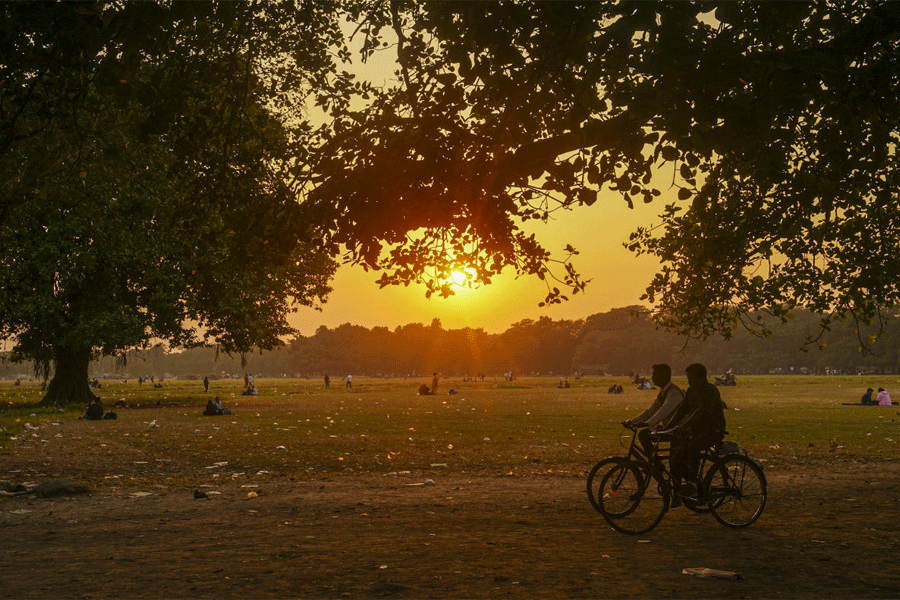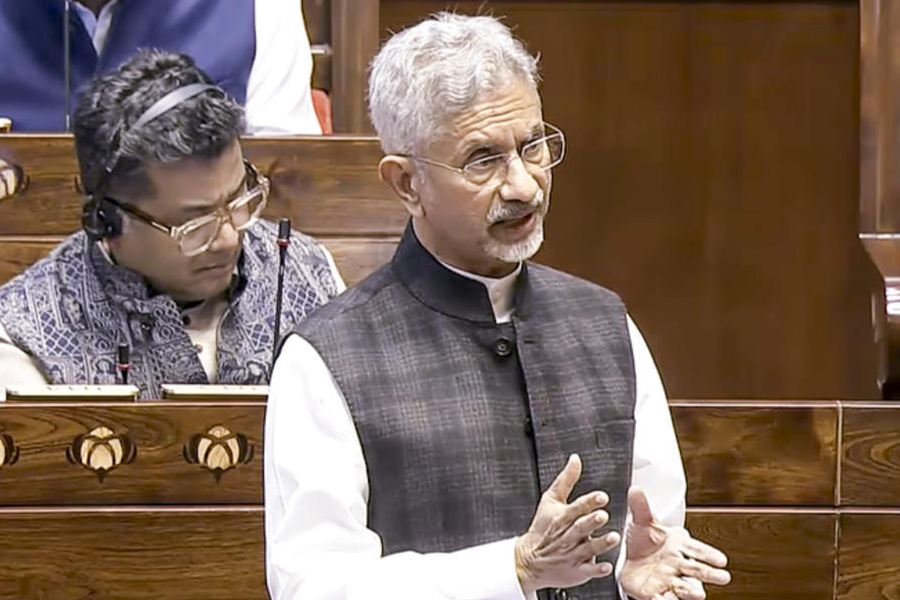|
|
 |
| Ganesh Pyne, The Wings (2002) and Hemant Rao, Untitled (2008) |
If you like your art menu catholic with a pick of the new leavening the known, chances are CIMA’s summer show (until August 1) will grab your attention. With about 55 works by 30 or so artists, the show makes room for different tastes. Although obligatory nods to big names acknowledge their entrenched importance, what makes one pause are the younger, less known and unknown artists.
Anita Gopal’s works in paper, for example, veer between collage and construction, and hold you for their lightness of being. What she does in Lilac Organic is to cut and paste paper in thin, lithe loops resembling onionskin spirals, which both enclose space (lending it fluid and fleeting substance) and are subsumed in it as the paper trails off. Her wryness only allows biomorphic hints to emerge out of an abstract pattern that seems in motion and hence on the verge of a shift. In her two other works, more bare and spare than the first, you see the same simplicity in their play of space and paper.
For Hemant Rao, too, it’s the dialogue of space with motion that yields dramatic eloquence, as a litter of dashes, yoked to shadows, seems to float down from above against a field of hushed tones, cream and beige, brown and grey. However, this young artist from Madhya Pradesh seeks no regional identity in his work which remains urbanely anonymous.
Not so Ram Singh Urveti and Durgabai Shyam, folk artists from the same state. Their undoubted craft is ruled by tradition although they have switched to acrylic and canvas. Their stylized trees with fanning branches and snaking roots, mythical birds and white staccato lines in colour — like run stitch — are striking, if somewhat decorative to the urban eye. Nevertheless, their presence asserts the very strength of that tradition. Harish Ojha, on the other hand, is an abstractionist who, in Lok Utsav, imports on a vast ground of white and light tones a central motif in rich colours that refers to folk culture.
Rahul Wagh and Anand Prakash are also abstractionists from Madhya Pradesh. The former’s spontaneous mixed-media colour smudges on paper appear provisional as though the viewing moment has chanced upon a process of mutation. The latter’s canvas of reddish colour zones and brusque lacerations heaves with masculine brio.
In Gauri’s acrylic, there’s a dense tangle of full-bodied colour segments that may bring to mind the palette of Tyeb Mehta and the mangled forms of Jaya Ganguly. However, if you were to go by the title, Wow My Tail, the work would seem to be spiked with jest rather than terror.
In his largish painting, Gouri Shankar Soni, a young artist from Rajasthan, comes up with imagery that’s fussy in its narrative but yields an allegory of references. A flat surface of blue-grey is punctuated with islands of black circles that trap tiny but finely modelled figures radiant in fluorescent pinks and greens. Each, condemned to his circle, is caught in some activity. One, with feet splayed out, seems to have tumbled inwards, sucked into a black hole, as it were. Two figures try to reach out to each other as though from balconies of different floors. The physical separateness of the figures, the prison of their black cells, the intimations of a vortex or vacuum that life may ultimately mean are suggestions, perhaps unintended, that immediately surface.
Satyajit Roy’s meticulous brush appears to seek inspiration from Bikash Bhattacharjee and his insidious deviations. His Terrorism is rather facile, but the second work, Chayer Adda, insinuates wasted hours through discarded earthen cups, saal leaves and torn pictures that could refer to scraps of talk, banal and bawdy, common among stag throngs at street corners. Saugata Das wields a deft pen as his teasing squint mauls faces into caricatures, structured with speedy lines and sharp angles.
The two sculptors on show are young local artists. Anup Mondal constructs the bent figure of a metal welder by welding together small rectangles of aluminium. The dark irony of the title, Never Ending Construction, carries the Chaplinesque metaphor of de-humanization from Modern Times to dissipate sentimentalism. Tapas Biswas impresses with the technical bravura of his Ghat of Varanasi in bronze. The meandering wall of bronze, articulating the jostle of aged buildings leading down to the crowded steps with people and umbrellas, may not offer a new view, but is certainly breathtaking in terms of scale.
Also to be seen are works by Ganesh Pyne, Jogen Chowdhury, Paramjit Singh and others.












